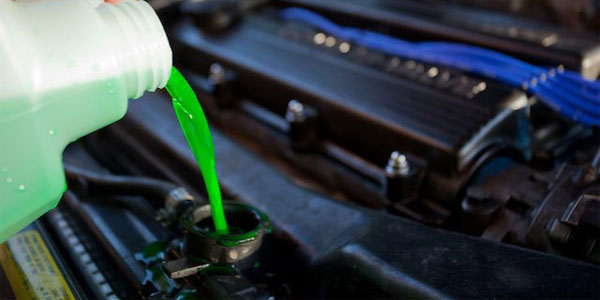

If you notice that your coolant and engine oil have mixed together, it’s important to take care of the issue as soon as possible.
#Coolant in oil drip test how to#
How to Fix Coolant Mixing With Engine Oil How to Check for Coolant in your Oil – Engine Failure If it blows, coolant can leak into the cylinders and mix with the oil. This is because the head gasket seals the engine block from the cylinder head. If your car’s head gasket is blown, there may be coolant in the oil. Will There Be Coolant in the Oil If Head Gasket is Blown? If you do have coolant in your oil, have it checked by a mechanic as soon as possible. It can also clog up the oil filter and cause other problems. The coolant can contaminate the oil and cause it to break down. If the coolant is leaking into the oil, it will eventually cause engine damage. Yes, you can drive with coolant in oil, but it’s not recommended. If you notice any leaks or unusual smells coming from your engine, be sure to have it checked out by a mechanic as soon as possible. In severe cases, the coolant can even corrode engine parts. The coolant can mix with the oil and break down the lubricating properties of the oil, leading to metal-on-metal contact and increased wear on engine parts. If coolant gets in the oil, it can cause serious damage to your engine. Coolant in the oil can cause serious damage to your engine and should be fixed promptly. If you suspect that coolant has gotten into your oil, have the car checked by a mechanic as soon as possible. You can also check for leaks in the cooling system – if coolant is leaking from the radiator or hoses, it could be getting into the oil as well. If the oil is low or looks milky, it’s likely that coolant has mixed in. If you’re wondering whether coolant has gotten into your oil, there are a few ways to tell. If not, then add more coolant until it reaches this level.Once you have removed the cap, check to see if there is enough coolant in the reservoir by looking at the “full” line indicator on its side (if applicable).Place a clean rag under the opening to catch any coolant that may spill out when you remove the cap.Next, locate your coolant reservoir and unscrew the cap.If it is below the “full” line, then you will need to add more oil.Pull the dipstick out of the fill tube and check to see where the oil level is on the stick.Insert the dipstick back into the oil fill tube and push it all the way in.Remove the oil dipstick from your vehicle and wipe it clean with a rag.If you see any bubbles or foam forming on the surface of the mixture, that means there is coolant present in your oil.

Then, add an equal amount of water to the container and shake it up. If you want to test for coolant in oil, the best way to do it is to take a sample of your oil and put it into a clear container.


 0 kommentar(er)
0 kommentar(er)
